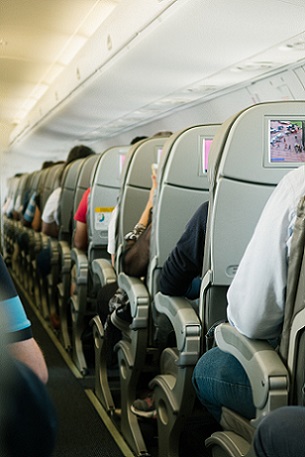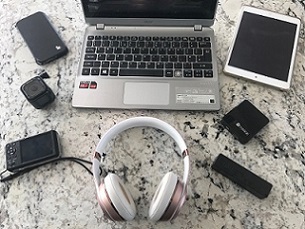 The last place you want a lithium battery fire is in the confined space of an aircraft passenger cabin
The last place you want a lithium battery fire is in the confined space of an aircraft passenger cabin
 All these electronic devices are powered by lithium batteries
All these electronic devices are powered by lithium batteries
 An AvSax fire containment bag which is now on board almost 17,000 aircraft worldwide
An AvSax fire containment bag which is now on board almost 17,000 aircraft worldwide
A passenger’s power bank caught fire on a plane … less then a week since a similar frightening incident on another airline.
The Thai AirAsia Airbus was flying from Bangkok to Nakhon Si Thammarat in southern Thailand on Saturday, February 24, 2024, when smoke began to pour from an overhead locker.
A passenger’s power bank had gone into thermal runaway and the crew acted quickly to douse the fire and put the device in a container so it could continue to its destination and land safely. No-one was hurt.
Some reports suggest the power bank exploded and was in a seat pocket rather than the overhead locker.
The incident happens just days after a passenger plane diverted to make an emergency landing after a lithium battery fire on board, also caused by a power bank.
The Royal Air Philippines plane flying from Caticlan in the Philippines to Shanghai in China on Monday, February 19, 2024, diverted to Hong Kong after a passenger’s power bank battery went into thermal runaway, sending smoke spiralling through the cabin.
The plane was on the ground for two hours before continuing its journey.
Last week it was revealed that lithium batteries caused fire incidents on board five planes in just one month and every time the overheating device was placed in a thermal containment bag.
All the incidents happened in American airspace or involved American aircraft and were made public by the Federal Aviation Administration which regulates civil aviation in the USA.
Read more on that story – including details about all five incidents – by clicking here.
Lithium batteries power all our everyday electronic devices such as mobile phones, laptops, iPads, vapes and e-cigarettes.
When a lithium battery overheats it goes into a chemical process called thermal runaway and when this happens one cell in a battery can produce enough heat – up to 900°C (1652°F) – to cause adjacent cells to overheat. This can cause a lithium battery fire to flare repeatedly and they are then very difficult to put out.
Many airline companies are equipped with thermal fire mitigation bags and the best-selling one by far is the AvSax which is now on almost 17,000 planes operated by around 100 airlines.
AvSax are made by UK company Environmental Defence Systems Ltd and its special projects manager Jessica Bailey said: “Many airline operators now have thermal mitigation bags on board to deal swiftly and effectively with the problem before anyone is hurt or the aircraft is damaged and it means the aircraft can continue its journey to its final scheduled destination without making an emergency landing. When this happens it’s very disruptive for the passengers and costly for the airline companies.”
The AvSax won the Queen’s Award for Enterprise for its innovation in the UK – the highest award any business can achieve.
The reason it’s so popular among airlines is that it continually cools the overheating device while containing it.
The UK’s regulatory organisation the Civil Aviation Authority says: “Since the development of the International Civil Aviation Organization guidance on dealing with an in-flight battery fire, new products designed for use in response to lithium battery thermal runaway events have become available.
“Products which provide both a cooling and containment capability are typically more aligned to the existing ICAO guidance as when used they are filled with water or other non-flammable liquid to act as a cooling agent.
“After knocking down flames it could conceivably take just a couple of seconds for a personal electronic device to be placed inside a containment bag, allowing it to be moved to a place of safety.
“Passengers could then return to their seats, mitigating potential unrelated safety hazards such as injury in the case of severe turbulence. Equally, the effect on flight crew in carrying out their duties following an event on the flight deck would be minimised.”
For more information on AvSax go to www.avsax.com